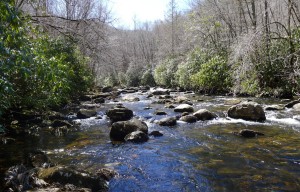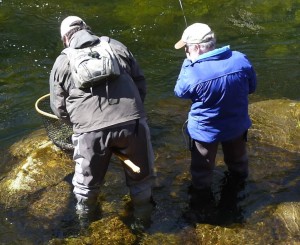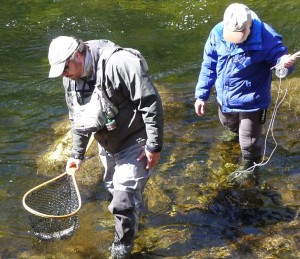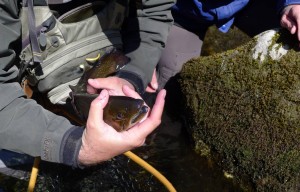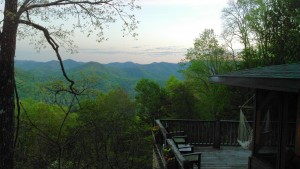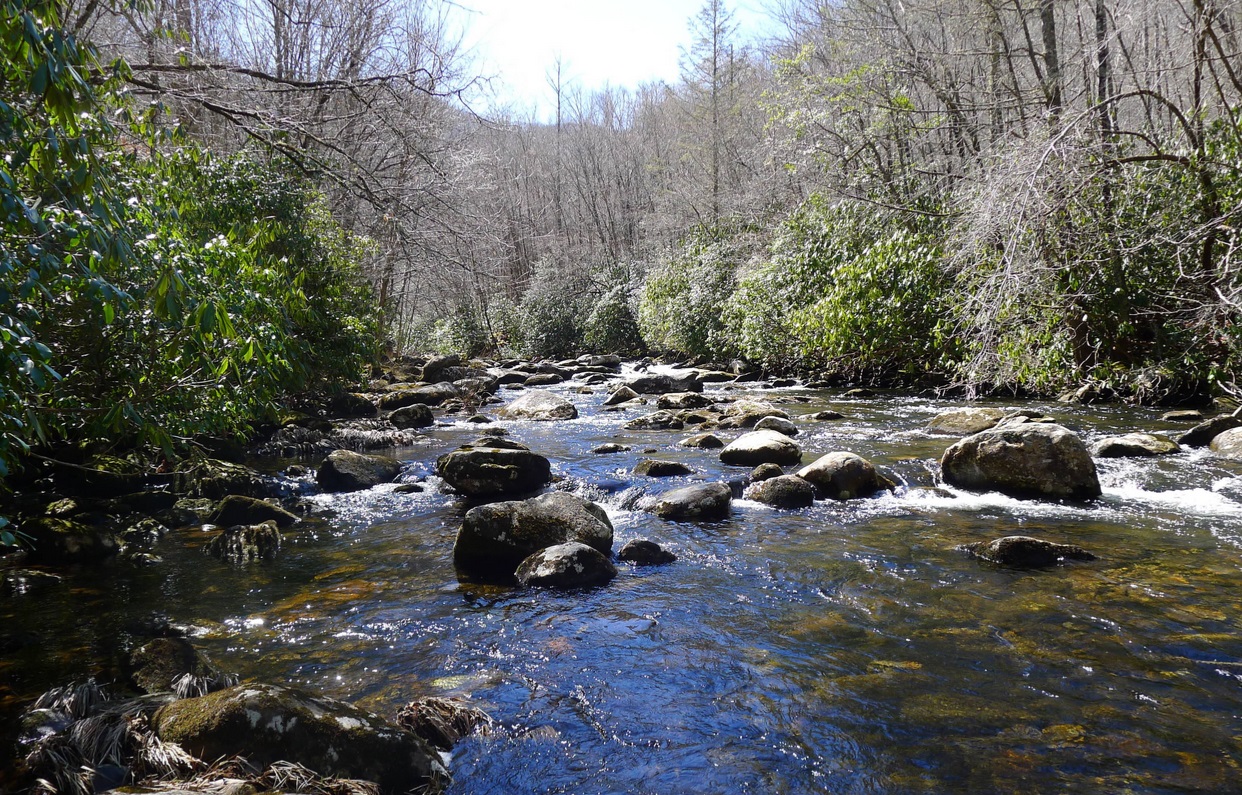fly–fishing
noun fly–fish·ing \ˈflī-ˌfi-shiŋ\
-a method of fishing in which an artificial fly is cast by use of a fly rod, a reel, and a relatively heavy oiled or treated line; (could also be a verb)
If you haven’t caught the fly-fishing bug, it’s only a matter of time.
Fly-fishing is one of the fastest growing sports in the nation. the Outdoor Blogger Network says that almost 25% of all the blogs are fly fishing related and fly fishing product sales totaled almost $1 billion in sales in 2014.
Robert Rankin, operator of Snowbird Mountain Lodge in Robbinvsille, NC, has seen the sport of fly-fishing grow in western North Carolina, so he’s started offering a package for those interested in fly-fishing, whether they are new to the sport or experienced anglers.
So twice a year, as a lead-in and a end to the season, Snowbird Mountain Lodge brings in members of the USA Fly Fishing Team to guide and teach casting/fly tie, stream techniques to guests.
The March 10-12 “Trout Festival” not only was a chance to get out and fly-fish in Big Snowbird Creek, it was also an opportunity to learn about Trout, in terms of preparing and cooking in culinary classes.
The next “trout” weekend will be November 5-7, 2015.
“Big Snowbird Creek is super-stocked catch-and-release,” explained Rankin. “Last season’s event saw all fishermen catch the triple crown, Brooks, Browns and Rainbows. It’s a rare opportunity and these three days will fill up fast!”
You don’t have to wait until March or November to experience some of the best fly-fishing in the country, in western North Carolina.
Snowbird Mountain Lodge, 4633 Santeetlah Road, in Robbinsville N.C. is not only the perfect place to get away from all the hustle and bustle of your hectic life, it’s the ideal place to try what may be a new endeavor in the sport of fly-fishing. World class accommodations, food and vistas is what you will find at Snowbird and in western North Carolina, and it’s all just a couple hours from the Atlanta metro area.
A weekend at Snowbird does the mind and body good. See more at www.snowbirdlodge.com or 828-479-3433.
For more information on the USA Fly Fishing Team, please visit:
http://www.flyfishingteamusa.com/
Fly Fishing Terminology
Backing: An added braided line that connects the reel’s spool to the fly line. Since fly lines average 75-115 feet in length, the lines require backing for those adrenaline-charged times when a large fish runs out all of the regular fly line.
Barb: The backward facing projection cut into a hook.
Barbless: Barbless hooks are either manufactured without a barb or the barb is squeezed down using hemostats or pliers. ‘Going barbless’ makes it easier to remove a hook and minimizes the handling and potential damage to a fish you intend to release.
Cast: This is the motion you make when you collectively ‘throw’ a fly rod, reel and line. There are different types of casting for different fishing applications. (See Back Cast, Overhead Cast, River Load Cast, Roll Cast, Water Tension Cast).
Catch and release: A practice within fly fishing intended as a technique of conservation. Fish should be fought quickly and never allowed to tire to the point of exhaustion to prevent injury or death. After capture, the fish is unhooked using wet hands ‘ or no touching if possible ‘ and forceps and returned to the water as quickly as possible. If necessary, resuscitate by pointing the fish’s head upstream into the current and waiting until it swims off under its own power.
Drift: Four types of drifts: Straight upstream from you, upstream and across from you, downstream and across from you, straight downstream from you.
Open Loop: The signature cast where the loop ‘opens’ as it travels through the air. A common malady for new casters, an open loop is caused by a very wide casting arc.
Spool: The revolving part of the fly reel that holds the backing and the fly line. You may wish to purchase additional spools for your reel, enabling you to quickly change from one type of line to another to match fishing conditions.
